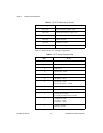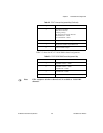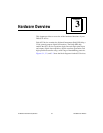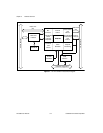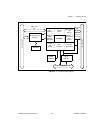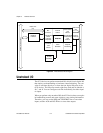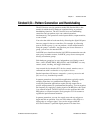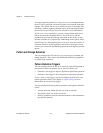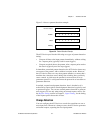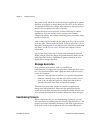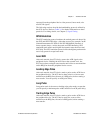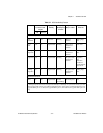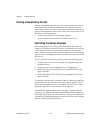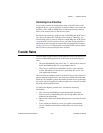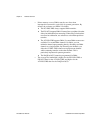
Chapter 3 Hardware Overview
© National Instruments Corporation 3-7 DIO 6533 User Manual
Figure3-4 shows a pattern-detection example.
Figure 3-4. Pattern Detection Example
The 6533 device provides the following two types of pattern detection
timing:
• Compare all data to the input pattern immediately, without waiting
for a request pulse (typically used for start triggers).
• Compare acquired data to the pattern, after a request pulse strobes
the data in (typically used for stop triggers).
In immediate, unstrobed pattern-detection, the 6533 device detects any
occurrence of the pattern, with or without a request strobe. However,
the 6533 device filters out very short pattern matches, to ensure that a
transient data value that occurs during line switching does not falsely
cause a match. A glitch must be present for no more than 20ns to
guarantee rejection. A valid pattern must be present for at least 60ns to
guarantee detection.
In strobed, request-based pattern detection, data is checked as it is
strobed in by request pulses. Strobed pattern detection is typically used
to generate triggers. You can use strobed pattern detection to generate
start triggers too, but only when using an external request source. See
the Request Timing section in Chapter5, Signal Timing, for the timing
of the request pulses that strobe in data.
Change Detection
You can configure the 6533 device to search for transitions on one or
more input lines. Whenever a change occurs, the 6533 device generates
an internal request, capturing the new input pattern.
XXXXXX10
00000010
00000011
Postive: Search for Match
Value to Detect
Pattern
Mask
Polarity



